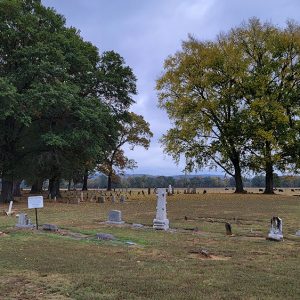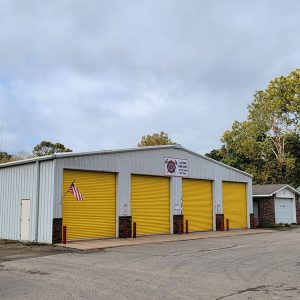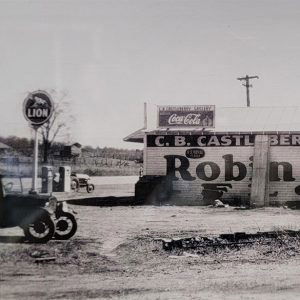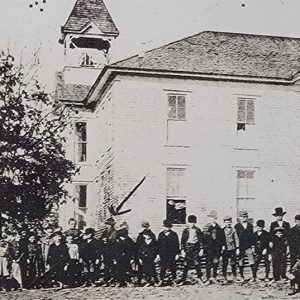calsfoundation@cals.org
Lamar (Johnson County)
| Latitude and Longitude: | 35º26’26″N 093º23’17″W |
| Elevation: | 440 feet |
| Area: | 4.62 square miles (2020 Census) |
| Population: | 1,719 (2020 Census) |
| Incorporation Date: | May 19, 1887 |
Historical Population as per the U.S. Census:
|
1810 |
1820 |
1830 |
1840 |
1850 |
1860 |
1870 |
1880 |
1890 |
1900 |
|
– |
– |
– |
– |
– |
– |
– |
– |
– |
474 |
|
1910 |
1920 |
1930 |
1940 |
1950 |
1960 |
1970 |
1980 |
1990 |
2000 |
|
520 |
542 |
449 |
474 |
555 |
514 |
589 |
708 |
768 |
1,415 |
|
2010 |
2020 |
|
|
|
|
|
|
|
|
|
1,605 |
1,719 |
|
|
|
|
|
|
|
|
Lamar is a second-class city in the Arkansas River Valley and the Interstate 40 corridor. Located a few miles east of Clarksville (Johnson County), Lamar is notable for its schools and for being the home of two acting governors of Arkansas.
The region that would become Lamar first entered recorded history during the Trail of Tears, when Lieutenant Joseph Whipple Harris led a party of 125 Cherokee across Arkansas to Indian Territory (present-day Oklahoma). Harris led the group on a trail that passed through Johnson County, camping on a ridge near the present site of Lamar on May 2, 1834. Later parties traveling to Indian Territory followed the same route. A segment of road believed to be the route used by Harris and others was added to the National Register of Historic Places in 2005.
In 1835, Samuel Adams established a plantation on this same site. Adams, who owned a large number of slaves, became wealthy through farming, land investment, and banking. He also entered politics, serving in the Arkansas House of Representatives and the Arkansas Senate. Elected president pro tempore of the Senate in 1842, Adams became acting governor of Arkansas when Governor Archibald Yell resigned after being elected to the U.S. House of Representatives. Adams served as acting governor from April to November 1844, when Thomas Stevenson Drew was elected governor and Adams was elected state treasurer. His plantation in Johnson County was first called “Stream of Cabins” because of the many dwellings he had built for his slaves, and later “Cabin Creek.”
In 1850, Sidney Cazort moved to Johnson County and acquired the land formerly owned by Adams. Cazort and his family developed the community of Cabin Creek, clearing the land and building both a lumber mill—the largest between Little Rock (Pulaski County) and Fort Smith (Sebastian County)—and a cotton gin. In peak years, the gin turned out between 3,000 and 4,000 bales of cotton. Corn, oats, hay, and berries were also grown by the Cazort family and their neighbors. Stores and a hotel were also built, and Cabin Creek became a common stopping place for travelers moving up and down the Arkansas River Valley.
The fortunes of Cabin Creek grew in the 1870s when a railroad was built north of the Arkansas River to connect Little Rock and Fort Smith. Known first as the Little Rock and Fort Smith Railroad, it was added to Jay Gould’s St. Louis, Iron Mountain and Southern Railway, which eventually was folded into the Missouri Pacific Railway. The railroad built a water tank and a depot at Cabin Creek in 1873, making William A. Cazort their local agent. Cazort became postmaster when the post office was established in 1874. In 1887, the city became incorporated and chose the name Lamar to honor Lucius Quintus Cincinnatus Lamar, secretary of the interior in President Grover Cleveland’s cabinet. The name of the post office was changed, but the railroad continued to designate the depot as Cabin Creek.
A Methodist church was dedicated in 1880. A Presbyterian congregation was established a few years later. The Methodist building was damaged by a storm in 1896, and a new building was constructed around 1903. That building fell prey to termites and was replaced with a brick structure in 1958. The first school building in Lamar was a frame building completed in 1904; it accommodated thirty students. The school burned in 1914, and school was held in private houses for approximately two years until a new structure was completed. That single building served the community until 1938, when a Works Progress Administration (WPA) project added a gymnasium. More buildings were added in the following years. A new high school was dedicated in 1976. Smaller school districts of Johnson County were consolidated into the Lamar School District.
William Lee Cazort, grandson of Sidney Cazort, was elected to the Arkansas House of Representatives in 1915 and became speaker of the house in 1917. In the next election, he was chosen for the Arkansas Senate, and he later served as lieutenant governor of the state. In June 1933, Cazort was briefly acting governor while Governor Junius Marion Futrell was out of the state. Cazort ran three times for the office of governor but failed each time to gain a majority of votes in the Democratic primary.
In 1920, horticulturist John Ralph Cooper began an experimental peach orchard on the property of Lee Cazort. The effort was later moved to an orchard near Nashville (Howard County). During his campaign for governor in 1924, Cazort boasted of the activity of the Ku Klux Klan (KKK) in Lamar, saying that the organization had cleared the region of bootleggers and liquor dispensaries. Two library societies were also formed in Lamar in the 1920s.
The Great Depression weakened the agricultural economy of Lamar, as it did throughout the United States. During and after World War II, the economy slowly strengthened again. The construction of Interstate 40 drew more travelers through the region, providing customers to local businesses.
As of 2013, the city of Lamar had several churches and about a dozen stores of various kinds. The school district has more than 450 elementary students, 300 middle school students, and 300 high school students. The population of Lamar in the 2010 census was 1,605, of whom the vast majority were white.
For additional information:
Berry, Pauline Cazort. “Lamar Methodist Church has Roots in Early History of ‘Cabin Creek.’” Johnson County Historical Society Journal 28 (April 2002): 20.
Kettelhut, Clio Thompson. “Sixty Years of Growth for Lamar Schools: 1916–1976.” Johnson County Historical Society Journal 2 (March 1976): 5–9.
Langford, Ella Molloy. History of Johnson County, Arkansas. Clarksville, AR: Johnson County Historical Society, 1976.
Zachary, Roger D. “The Founding of Cabin Creek (Lamar).” Johnson County Historical Society Journal 6 (April 1980): 1–2.
Steven Teske
Butler Center for Arkansas Studies
 Brown's Cemetery
Brown's Cemetery  Johnson County Map
Johnson County Map  Entering Lamar
Entering Lamar  Lamar Church
Lamar Church  Lamar City Hall
Lamar City Hall  Lamar Fire Department
Lamar Fire Department  Lamar Grocery
Lamar Grocery  Lamar School
Lamar School  Lamar Street Scene
Lamar Street Scene  Lamar Street Scene
Lamar Street Scene 



Comments
No comments on this entry yet.